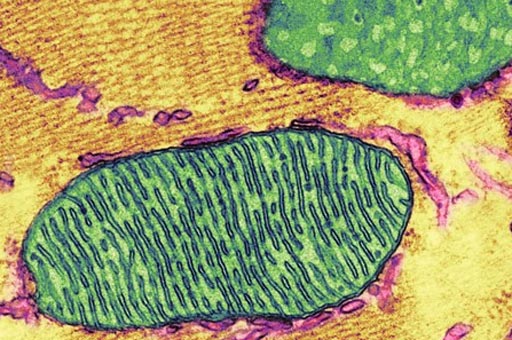Neurite Outgrowth Stimulated by Blocking Acetylcholine Receptor
By LabMedica International staff writers
Posted on 31 Jan 2017
Neurosciences researchers have found that blocking the muscarinic acetylcholine type 1 receptor (M1R) in neurons promotes neurite outgrowth, which prevents or reverses peripheral neuropathy in cell and rodent models of type I and II diabetes, chemotherapy-induced neuropathy, and HIV.Posted on 31 Jan 2017
A neurite refers to any projection from the cell body of a neuron. This projection can be either an axon or a dendrite. The term is frequently used when speaking of immature or developing neurons, especially of cells in culture, because it can be difficult to tell axons from dendrites before differentiation is complete.

Image: A colorized scanning electron micrograph (SEM) depicting mitochondria, which play a critical role in peripheral nerve growth regeneration (Photo courtesy of Thomas Deerinck, National Center for Microscopy and Imaging Research, University of California, San Diego).
A muscarinic receptor antagonist (MRA) is a type of anticholinergic agent that blocks the activity of the muscarinic acetylcholine receptor. Acetylcholine (ACh) is a neurotransmitter whose receptor is a protein found in synapses and other cell membranes. Investigators at the University of California, San Diego and their colleagues at the University of Manitoba have been seeking to determine the mechanism by which antimuscarinic compounds enhance neurite outgrowth and to translate findings into a therapeutic approach that could prevent or reverse peripheral neuropathy in a range of in vitro and in vivo models.
The investigators reported in the January 17, 2017, online edition of the Journal of Clinical Investigation that sensory neurons from mice lacking M1R exhibited enhanced neurite outgrowth, confirming the role of M1R in tonic suppression of axonal plasticity. M1R-deficient mice made diabetic with streptozotocin were protected from physiological and structural signs of sensory neuropathy. Blocking M1R using the specific or selective antagonists, pirenzepine, VU0255035, or muscarinic toxin 7 (MT7) activated AMPK (5' adenosine monophosphate-activated protein kinase) and overcame diabetes-induced mitochondrial dysfunction in vitro and in vivo. These antimuscarinic drugs prevented or reversed indices of peripheral neuropathy in diverse rodent models of diabetes.
“This is encouraging because the safety profile of anti-muscarinic drugs is well-characterized, with more than 20 years of clinical application for a variety of indications in Europe,” said senior author Dr. Paul Fernyhough, professor of pharmacology, therapeutics, and physiology at the University of Manitoba. “The novel therapeutic application of anti-muscarinic antagonists suggested by our studies could potentially translate relatively rapidly to clinical use.”














